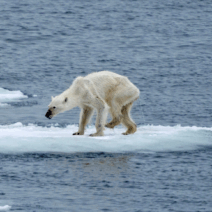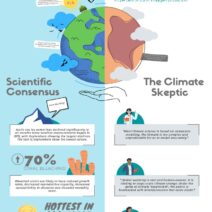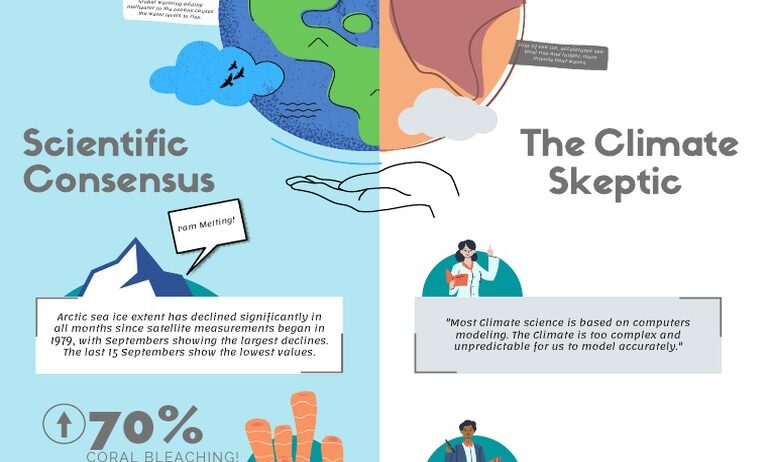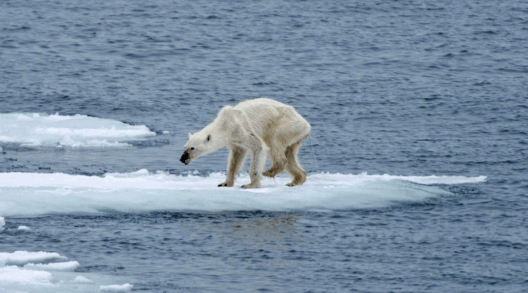In the grand tapestry of Earth’s ecosystems, few elements weave as intricately into the climate change narrative as ocean currents. Often overlooked in the discourse surrounding climate dynamics, these flowing rivers of water not only influence weather patterns but also serve as crucial players in the global carbon cycle. As we delve deeper into understanding the role of ocean currents in a warming world, we realize that they are indeed the unsung heroes, even as they find themselves victimized by the very changes they help orchestrate.
Ocean currents are vast, continuous movements of seawater generated by a multitude of forces. These forces include wind, temperature gradients, salinity differences, and the Earth’s rotation. They circulate around the globe, creating interconnected systems that have far-reaching implications for marine ecosystems as well as terrestrial climates. For instance, the Gulf Stream transports warm, tropical waters from the Caribbean to the northeastern coast of the United States and beyond. This warm current influences not only regional climates but also global weather patterns by regulating heat distribution across the planet.
At a glance, one might wonder how salty water and air movements can have such profound impacts. The answer lies in thermohaline circulation, a phenomenon driven by differences in temperature and salinity—two essential elements in ocean currents. This process plays a pivotal role in regulating Earth’s climate by redistributing heat and maintaining the atmospheric balance. However, as temperatures rise and the polar ice caps melt, the delicate balance of these currents is threatened. The influx of freshwater from melting ice disrupts the salinity levels necessary for the currents to function effectively, leading us to an unsettling realization: the heroes may soon become casualties of climate change.
The warming of oceans is not merely a local issue; it’s a global one. Temperature increases prompt alterations in ocean stratification, which can lead to reduced nutrient mixing and a decline in primary productivity. Phytoplankton—often termed the lungs of the ocean—rely on currents to bring them nutrients from the depths. These microscopic organisms form the foundation of the marine food web and sequester vast amounts of carbon dioxide. As ocean currents falter, so too does the ability of these organisms to thrive, signifying a potential catastrophic shift in marine ecosystems.
Moreover, changing currents can exacerbate extreme weather events. The interplay between oceanic temperatures and atmospheric conditions is a known catalyst for hurricanes and typhoons. When warm surface waters fuel these storms, the resulting phenomena can lead to catastrophic damages both on land and sea. Communities situated along coastlines face heightened risks, while marine ecosystems endure disruptions that can decimate fish stocks and coral reefs. Thus, the momentum of ocean currents, which once served as both provider and protector, is becoming increasingly unpredictable.
One might pose the query: how can we leverage this knowledge to foster positive change? Recognizing ocean currents’ pivotal role allows for a transformative perspective in climate dialogues. When conversations focus only on carbon emissions and terrestrial interventions, we risk sidelining the intricate, multifaceted relationships between marine systems and global climates. Advocacy for the preservation of marine environments—such as the establishment of protected areas or sustainable fishing practices—could bolster the natural resilience of ocean currents. In doing so, we enhance not only the biodiversity of marine life but also the essential services these ecosystems provide.
Moreover, sustainable practices can mitigate the stress on ocean currents. Reducing plastic pollution, curtailing carbon emissions, and embracing renewable energy sources can alleviate some of the burdens placed on these aquatic highways. As stewards of the Earth, an understanding of the consequences tied to our daily actions is paramount. Each step we take toward sustainability can help ensure that ocean currents continue to function as they should, maintaining their role as unsung heroes in the climate narrative.
Nonetheless, it is vital to confront the sobering reality that ocean currents are not impervious to change. The erosion of their integrity signals a broader, systemic collapse that echoes warnings through the ages. As ecosystems falter, tipping points may loom ever closer, and the ramifications can ripple through food webs, economies, and the very fabric of human existence. The urgency for action becomes palpable when we recognize that the victims of our warming world extend beyond the human realm. Entire species, oceanic functions, and invaluable services face extinction or degradation if proactive measures are not adopted.
As we navigate this tumultuous terrain, it becomes increasingly evident that our fates are intertwined with the currents of the ocean. They represent a living testament to the dynamism of Earth’s systems: constantly shifting, adapting, yet sensitive to perturbations. A collective shift in perspective regarding the sanctity of ocean currents could catalyze an array of initiatives aimed at rejuvenating these vital arteries of our planet.
Ultimately, our understanding of ocean currents as both unsung heroes and victims of a warming world invites curiosity and humility. This duality underscores the premise that within the globalized dialogue surrounding climate change, no single entity stands alone. Every ripple and eddy tells a story, revealing how interconnected our world truly is. Consequently, embracing this complexity can ignite a renewed commitment to conservation—a promise to not only safeguard our oceans but to foster a sustainable future for all life on Earth. The time to act is now, for the currents of change are already underway.







